STARK COUNTY SAFETY COUNCIL
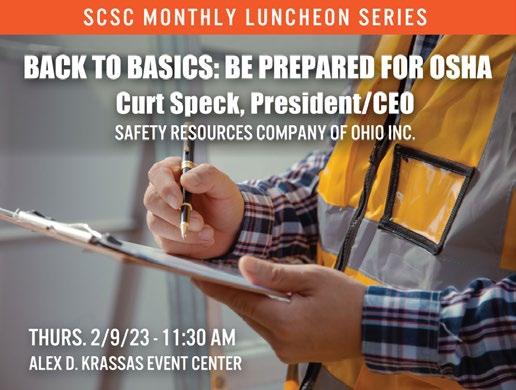
Cold Weather - Getting Ahead of the Chills
The cold has arrived AGAIN, and while Ohio may not be known for stable weather, you can be sure that we are in for more than a few frosty days in the coming month. While the weather may not be reliable, your Cold Weather Safety policies should be. Cold Weather Safety is a commonly overlooked topic. Cold Stress Illnesses are nothing to ignore however, so let’s take a moment to review them, and the precautions that can be taken to prevent them from occurring.
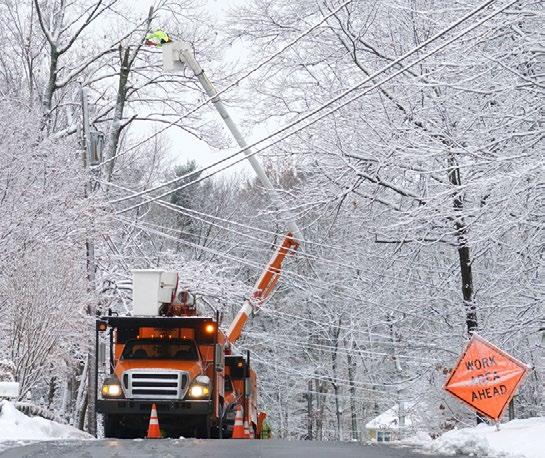
What are Cold Stress Illnesses? Simply put, Cold Stress Illnesses are conditions that are caused exposure to the cold.Dependingon the nature of the exposure, the risks can range from temporary skin redness and irritation, all the way up to permanent tissue damage and life threatening hypothermia. Worse, many of the warning signs of Cold Stress Illnesses are difficult to self diagnose. This makes having a proper Cold Safety Plan in place very important. It all starts with identifying where the potential for Cold Stress exists, and that’s not as simple as you might think. The first thing to do is recognize the conditions that can cause Cold Stress Illnesses. (click here to read on page 8 )
REGISTER ONLINE
February is Heart Health Month. Give the people you care about the best gift on Valentine’s Day - a commitment to making just one healthy lifestyle change.

Devoting a little time every day to care for yourself can go a long way toward protecting the health of your heart. Simple self-care, such as taking a moment to de-stress, giving yourself time to move more, preparing healthier meals, and not cheating on sleep can all benefit your heart.
And that’s a good thing, because heart disease is largely preventable and focusing on improving your heart health has never been more important. Heart disease is a leading cause of death for women and men in the United States, and many Americans remain at risk of getting it, according to the National Heart, Lung, and Blood Institute (NHLBI). Continue reading online
SSCC MEMBER NEWS VOLUME 20 ISSUE 2 NOVEMBER 2022 ♦ ♦
Stark County Safety Council Mission: To provide a forum of safety and health information, education and networking through leadership, innovation, facilitation, programming and support; in partnership with other public and private organizations.
MEMBER NEWS FEBRUARY 2023 starksafetycouncil.org
Provided by Curt Speck, President of Safety Resources Company of Ohio and SCSC Steering Committee Member
SCSC Luncheon: Get Prepared for OSHA
Join us for the monthly luncheon with Curt Speck, President/CEO, Safety Resources Company of Ohio. Curt will tell you how to “Get back to basics and be prepared for OSHA”.
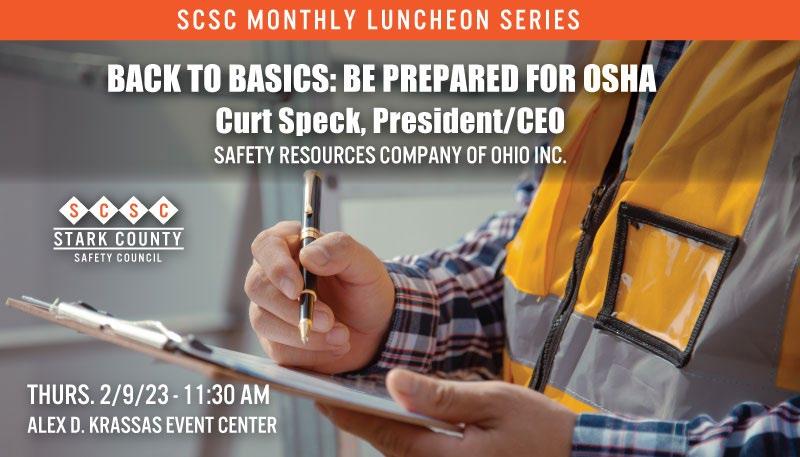
Discussions will include:
• OSHA’s NEW fine structure
• Annually required employee training

• How to defend your company from an OSHA inspection
• Best practices to follow in order to be compliant
REGISTER ONLINE
You do not need to be a SCSC member to attend - all are welcome! Season passholders do NOT need to register.
Spotlight Company: Learn about Tier II filing requirements.
2
LIMITED SPONSORSHIPS AVAILABLE
The Trench Safety Conference will feature 4 OSHA Directors and other experts. 300+ safety professionals are expected to attend.
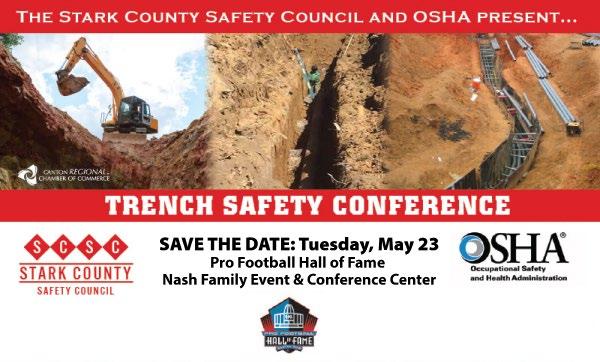
CLICK HERE to email us for details and to reserve your sponsorship today!
Upcoming Events (to-date):
FEB. 9 - GETTING BACK TO SAFETY AFTER COVID - Curt Speck, Safety Resources Company of Ohio
MARCH 8-10: OHIO BWC SAFETY CONGRESS
MARCH 16 - DISTRACTED DRIVING AND NEW OHIO LAW
APRIL 13 - WORKZONE SAFETY & STARK COUNTY HUNGER DRIVE
APRIL EXT. TRAINING/CREDIT
MAY 11 - FALL SAFETY
MAY 23 - TRENCHING CONFERENCE AT THE PRO FOOTBALL HOF
JUNE 8 OR 15 - CYBERSECURITY
JUNE EXT TRAINING/CREDIT
This information will be updated and may change. Please check our website and your email for the latest details.
3
Question: Can I shrink the size of my OSHA poster?

Answer: No, you cannot reduce the size of the OSHA poster. OSHA states, in 1903.2, that reproductions or facsimiles of Federal posters are to be at least 8½ inches by 14 inches, and the printing size is at least 10 pt. The caption or heading on the poster shall be in large type, generally not less than 36 pt. This poster must be posted in each establishment, in a conspicuous place where notices to employees are customarily posted. This poster is not to be altered, defaced, or covered by other material.
In the event, your authority having jurisdiction is Public Employment Risk Reduction Program, PERRP, the same size requirement applies to the State PERRP Poster.
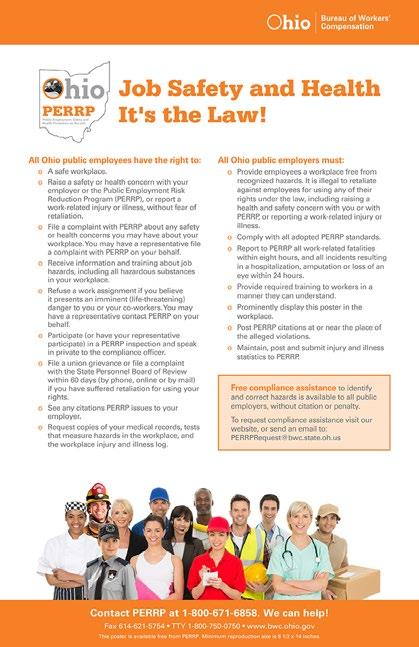
Both posters are available for free by download. Click on posters below to download.
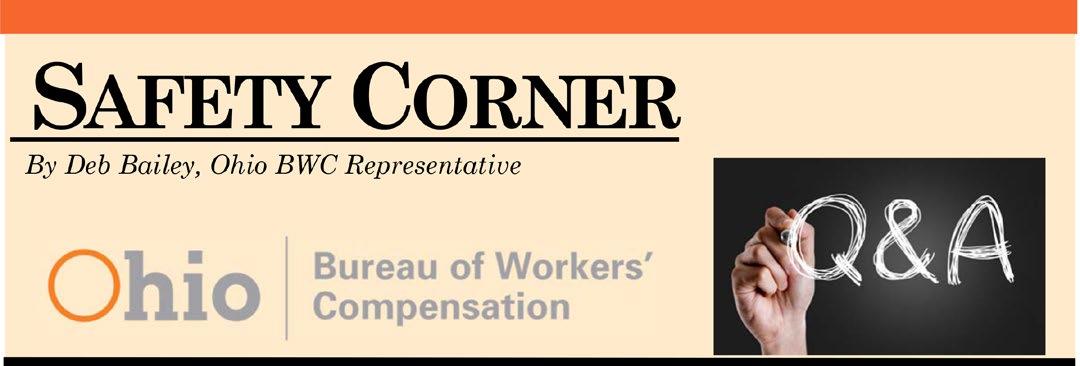
4
Scott M. Brenner – CTSP
These classes are approved for IACET CEUs.
339 East Maple Street, North Canton, OH 44720
Are you a logger, wood worker, tree trimmer, nursery/landscape worker or park and road maintenance worker? Are you ever involved in trail maintenance, emergency response or any situation where a chain saw or wood chipper may be used? Join us to get training and CEU course credit. You’ll learn all about safe work practices while using a chainsaw, wood chipper and more!
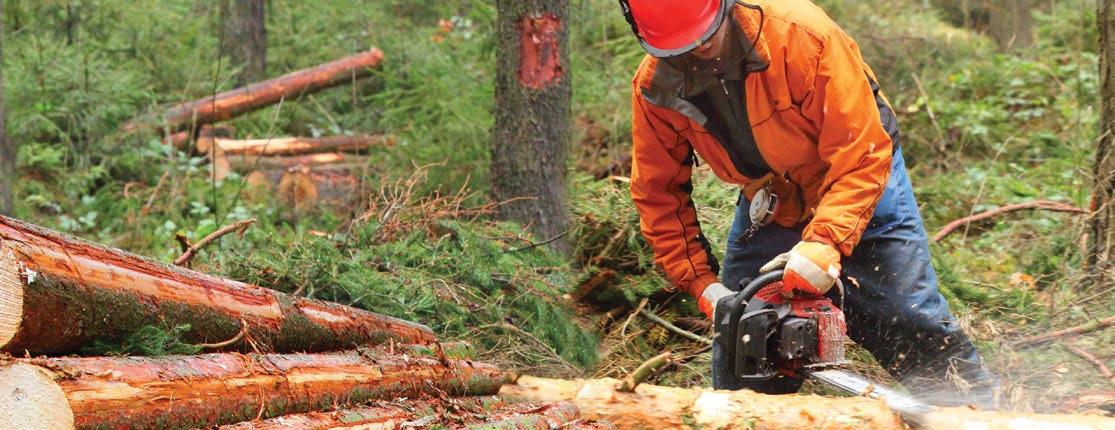
Tree
Essentials – Chainsaws, Chippers, PPE
INSTRUCTOR:
Scott Brenner is a Certified Tree Care Safety Professional, Certified Arborist, Certified Arborist Utility Specialist and Certified Tree Worker Climber Specialist. Scott is also the owner of ArborTek Tree Care in Massiollon, Ohio.
Work
ENROLL TODAY! 1.800.644.6292 | www.bwclearningcenter.com North Canton Service Office 8:30
4:15PM April 4, 2023
AM -
BWC now offers virtual safety training classes. BWC virtual training classes (VTCs) provide an opportunity for students to learn remotely from the convenience of their home or worksite. They are instructor-led classes providing the opportunity for participation and interaction consistent with the comparable BWC in-person class experience. VTCs offer the same continuing education units (CEUs)* and the same BWC program credits as the equivalent in-person class.
Virtual Training Classes
Important Information
How to Register for a VTC
Visit the BWC Learning Center at www.bwclearningcenter.com
Virtual Training Classes
•Enroll into any class section within a course that has class sections listed as “virtual training” on the enrollment screen. Virtual Training Classes are listed separately from in-person classes and include (VTC) at the end of the title.
•WebEx details will be emailed and are also accessible in the Learning Center in your enrolled section information by clicking the “+” for details. Refer to the “Enrolling” help document below for more information.
•You will be contacted by a BWC WebEx host 2-10 days before the training date.
•On the day of your scheduled VTC, you will click on the URL sent to you by WebEx upon registering to enter the virtual classroom. See the “Join a WebEx” document below for assistance joining the session.
•VTCs are listed in the Learning Center and promoted on the events page of BWC’s website.

SystemRequirements
•A computer with microphone and speaker set-up with a headset or other low feedback system.
•Internet access that meet or exceed WebEx compatible System Requirements.
•WebEx player downloaded before entering training.
•A working email address in student’s registration account within BWC Learning Center. iPads, Android tablets, Chromebooks, cell phones, and other comparable devices have limited functionality and are
Necessary for a Student Completion
To receive credit, you will need:
Registration is now open for the 2023 Ohio Safety Congress & Expo® (OSC23®)! OSC23® returns live and in-person to the Greater Columbus Convention Center March 8-10.

A select number of educational sessions will be livestreamed, offering the flexibility to attend how you choose. Visit the OSC23® website to register for the event.
•Sufficient content time in WebEx to match credits assigned to class.
•Participation in classroom activities in WebEx.

With over 100 educational sessions from leading experts and nearly 200 exhibitors waiting to connect in the Expo Marketplace, there is something for everyone at OSC23®.
•Completion of the online knowledge assessment with a passing score within 2 days after the class.
•A student account at the BWC Learning Center (or LMS). The student account must complete the online knowledge assessment and match the name used to attend the class in WebEx.

Join representatives from employers and government across the country to discover strategies and tools for a healthy, safe, and productive workforce.
MoreInformation
Division of Safety & Hygiene FS23-v1.090722
Click the linkfor more information and detailed instructions on how to use the BWC Learning Center and WebEx including how to create an account, register for courses and webinars, and complete knowledge assessments.


6
Virtual Training Class Date Time Electrical Hazard Recognition and Abatement (VTC) January 10-13, 2023 9:15 a.m. - 2:15 p.m. Developing a Driver Safety Program (VTC) January 11, 2023 9:30 a.m. - 1:00 p.m. AccidentAnalysisHalf-DayWorkshop(VTC)* January 18, 2023 9:30 a.m. - 1:00 p.m. Crisis De-Escalation Tactics and Safe Practices (VTC)* January 19, 2023 9:30 a.m. - 2:15 p.m. Hazardous Waste Operations and Emergency Response Awareness (VTC) January 26, 2023 9:30 a.m. - 1:30 p.m. Hazardous Waste Operations and Emergency Response Series Module 4: Air Monitoring, Work Zones (VTC) January 30, 2023 9:30 a.m. - 2:00 p.m. OSHA Recordkeeping Half-Day Workshop (VTC) February 2, 2023 9:30 a.m. - 1:00 p.m. Safety Series Workshop Module 3: Hazard Communication and Personal Protective Equipment Basic (VTC) February 8, 2023 9:30 a.m. - 1:00 p.m. February 9, 2023 9:30 a.m. - 1:00 p.m. Hazardous Waste Operations and Emergency Response Series February 13, 2023 9:30 a.m. - 2:00 p.m. February 15-16, 2023 9:30 a.m. - 12:45 p.m. February 22-23, 2023 9:30 a.m. - 1:30 p.m. February 27, 2023 9:30 a.m. - 2:00 p.m. High Hazard Focus Four Inspections: Be Prepared When PERRP February 28, 2023 9:00 a.m. - 12:30 p.m. Improving HazardRecognition through VisualLiteracy(VTC)March1-2, 2023 9:30a.m.- 1:15p.m. Hazardous Waste Operations and Emergency Response Series Module 7: Physical Hazards (VTC) March 13, 2023 9:30 a.m. - 2:00 p.m. Violence in the Workplace (VTC)* March 15, 2023 9:30 a.m. - 1:00 p.m. Electrical Safety in the Workplace through Insight and Implementation of NFPA 70E (VTC) March 20-21, 2023 9:30 a.m. - 12:45 p.m. Hazardous Waste Operations and Emergency Response Series Module 8: Confined Spaces (VTC) March 27, 2023 9:30 a.m. - 2:00 p.m. Safety Series Workshop Module 4: Walking Working Surfaces and Emergency Action Plan Basics (VTC) March 29, 2023 9:30 a.m. - 1:00 p.m. Hazard Communication Half-Day Workshop (VTC) March 30, 2023 9:30a.m.-1:00p.m. Safety for the Non-Safety Professional (VTC) April 5-6, 2023 9:30a.m.-1:00p.m.
January-June 2023 Division of Safety & Hygiene REGISTRATION IS OPEN AND FREE! ohiosafetycongress.com
Tips for Better Hea rt Health
Provided by Colleen Maurer, Human Resource Manager, E.B. Display and SCSC Steering Committee Member
By Amanda MacMillan, Reviewed by James Beckerman, MD, FACC
1. Aim for lucky number seven.The next time you’re tempted to stay up later than you should, remember how comfy that pillow will feeland how good a full night’s sleep is for your heart. In one study, young and middle-age adults who slept 7 hours a night had less calcium in their arteries (an early sign of heart disease) than those who slept 5 hours or less or those who slept 9 hours or more. The type of shut-eye they got was important, too. Adults who said they got good-quality sleep also had healthier arteries than those who didn’t sleep soundly. If you have trouble falling asleep or staying asleep at night, or if you don’t feel refreshed after a full night in bed, talk to your doctor about what changes you can make to help.
2. Keep the pressure off.
That cuff squeezing your arm at every doctor’s visit is important. It measures the amount of pressure flowing through your arteries with every heartbeat.
3. Slash saturated fats.
To help your heart’s arteries, cut down on saturated fats, which are mainly found in meat and full-fat dairy products. Choose leaner cuts and reduced-fat options. Also, totally quit trans fats, which are found in some processed foods. They drive up your “bad” (LDL) cholesterol level. Check ingredient lists for anything that says “hydrogenated” or “partially hydrogenated” -- those are trans fats. If it’s been 5 or more years since your last cholesterol blood test, you’re probably due for one.
4. Find out if you have diabetes.
Millions of people don’t know that they have this condition. That’s risky because over time, high blood sugar damages arteries and makes heart disease more likely. Your doctor should test your blood sugar if you are 45 or older, if you are pregnant, or if you’re overweight and have other risk factors for diabetes. If you find out that you have diabetes, work with your doctor on your lifestyle (diet and exercise) and any medicine that you may need medication. If you have borderline high blood sugar, also called prediabetes, take action now to turn things around.
5. Move more.
To keep it simple, you can aim for 30 minutes a day, 5 days a week of moderate exercise. That includes any activity that gets you moving around and breaking a slight sweat. “If you’re doing nothing, do something. And if you’re doing something, do more,” Lloyd-Jones says.
6 . Clean up.
Your heart works best when it runs on clean fuel. That means lots of whole, plant-based foods (like fruits, vegetables, nuts, and seeds) and fewer refined or processed foods (like white bread, pasta, crackers, and cookies). It’s time-tested wisdom. “The latest fads get overplayed by the media. But the core of what makes a heart-healthy eating pattern hasn’t changed for decades,” Lloyd-Jones says. One of the fastest ways to clean up your diet is to cut out sugary beverages like soda and fruit juice, which lacks the fiber that’s in actual fruit. “We drink way too many of our calories,” Sanghavi says.

7. Think beyond the scale.
Ask your doctor if your weight is OK. If you have some pounds to lose, you’ll probably want to change your eating habits and be more active. But there’s more to it than that.
8. Ditch the cigarettes, real and electronic. Smoking and secondhand smoke are bad for your heart. If you smoke, quit, and don’t spend time around others who smoke as well. E-cigarettes are popular, but they’re not completely problem-free. “They don’t contain the harmful chemicals in cigarette smoke, and they can help some people wean themselves off of smoking,” Lloyd-Jones says. “But they still do contain nicotine, so your goal should be to quit completely, not just switch to a less toxic version.”
9. Do more of what you love.
“I tell my patients that managing stress in a healthy way, whether it’s meditation, yoga, or exercise, is really important,” Sanghavi says. Make it a point, too, to spend time with people you’re close to. Talk, laugh, confide, and enjoy each other. It’s good for your emotional health and your heart.
10. Celebrate every step.
Making changes like these takes time and effort. Think progress, not perfection. And reward yourself for every positive step you take. Ask your friends and family to support you and join in, too. Your heart’s future will be better for it!
7
Cold Weather (cont’d from page 1)
The colder the air, the faster your body loses heat. But while cold air by itself is a cause for concern, it’s not the only thing that you need to consider. Wind and wet conditions multiply the potential dangers of cold weather. Moving air draws more heat from your body than still air, and water is even more effective. Since cold weather often brings high winds, rain, and snow, this means that even seemingly moderate temperatures can be dangerous to outdoor workers. This can be compounded even further by wet, muddy job site conditions. or if workers end up sweating through their clothing.
Like all safety topics though, prevention and preparation is the easiest and best way to prevent Cold Stress Illnesses. Start by minimizing exposure. When cold hazards are possible, try to see if the work can be rescheduled to when it will be warmer. A good example is keeping the work scheduled to daylight hours, when temperatures will be at their highest during the day. You should also avoid working during storms, if at all possible. If the work cannot be rescheduled to warmer times, then try to schedule workers in pairs, so that they can monitor each other for signs of Cold Stress. Next, make sure that workers are adequately geared for cold weather conditions. Hats, gloves, and water-resistant or water-proof boots and other outerwear go a long way in keeping workers properly protected from the cold. Additionally, encourage workers to keep a dry set of clothing available as, especially socks and underwear, that way they have something to change into if needed. Finally, build recovery time into your job plan. Employees working in cold conditions need the opportunity to periodically warm back up, ideally indoors with hot, sugary drinks to help them recover.
With amputation and death being the worst outcomes of Cold Stress Illnesses, they are not to be taken lightly. By taking precautions similar to these, you can help prevent these types of injuries from occurring in your workforce.
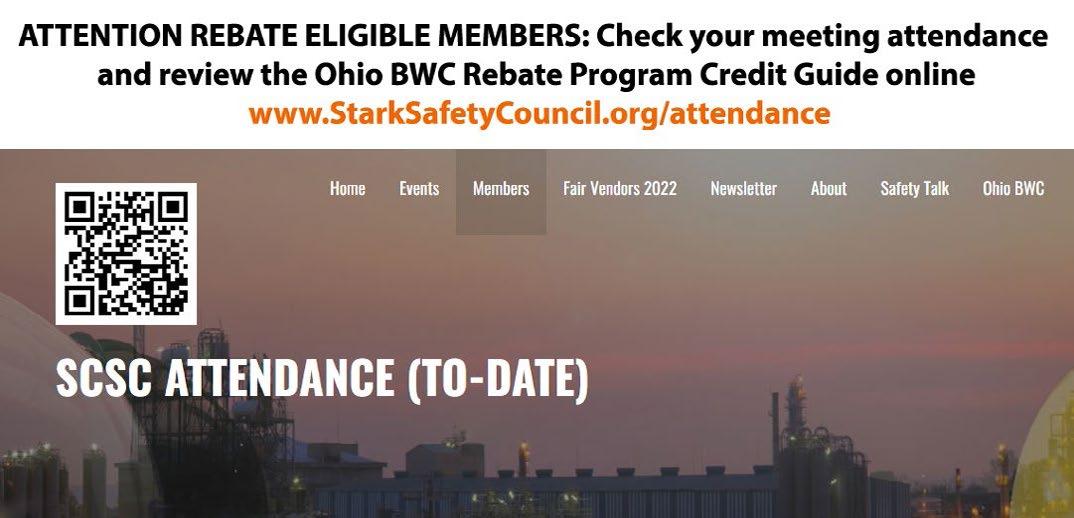
8


















